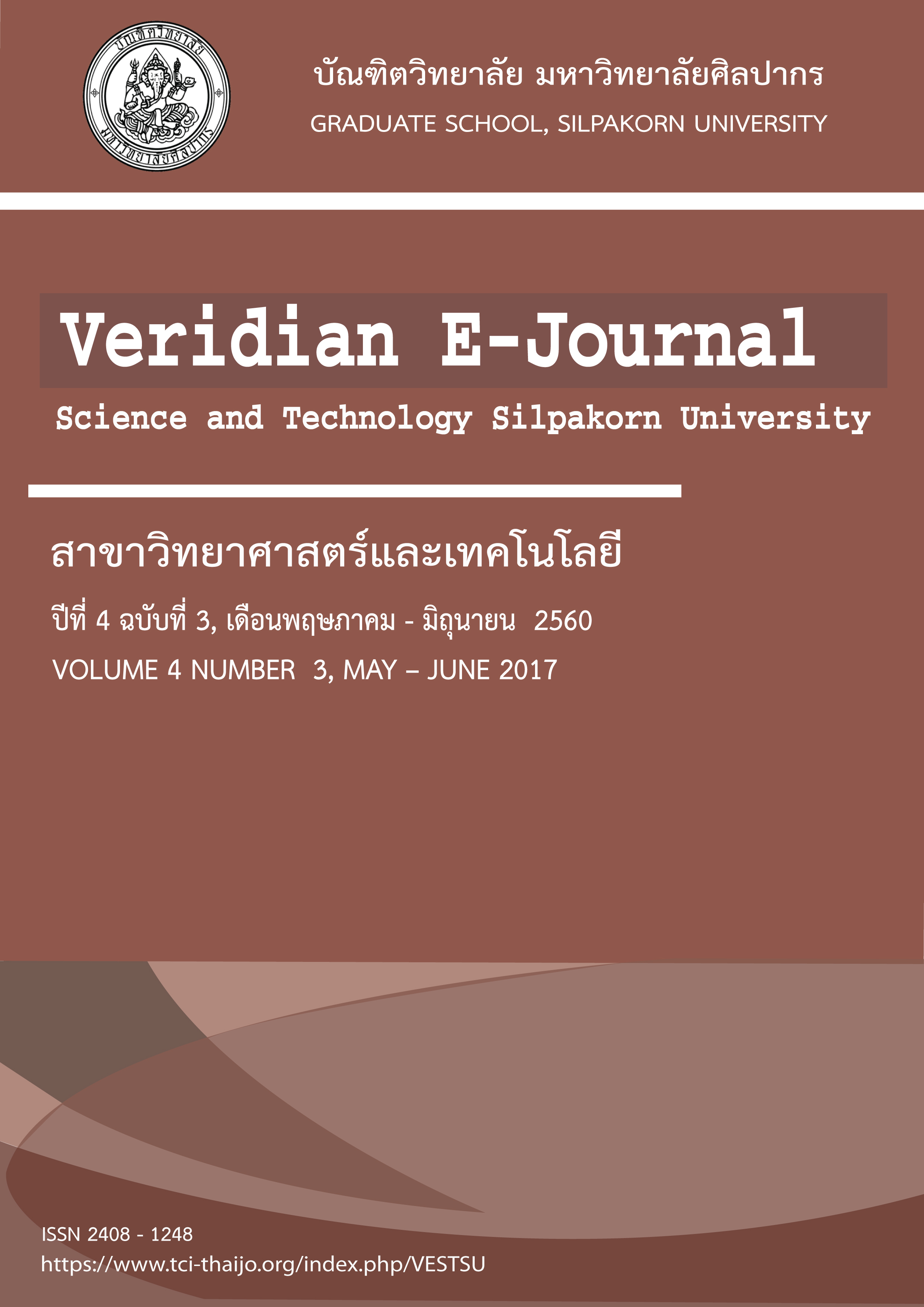การสกัดเซลลูโลสและการทำกระดาษจากเปลือกข่อย
Main Article Content
Abstract
เยื่อข่อยถูกสกัดด้วยเบส 3 ชนิดคือ แคลเซียมคาร์บอเนต แคลเซียมไฮดรอกไซด์ และโซเดียมไฮดรอกไซด์ เยื่อที่ได้ถูกนำไปขึ้นรูปเป็นกระดาษโดยปรับจากวิธีโบราณ เยื่อก่อนและหลังการสกัดด้วยเบสถูกนำไปวิเคราะห์ด้วยเทคนิค FTIR การเลี้ยวเบนของรังสีเอ็กซ์และการวิเคราะห์เชิงความร้อน สเปกตรัมอินฟราเรดของเยื่อก่อนการสกัดแสดงพีคของลิกนินและเฮมิเซลลูโลสที่ 1733 และ 1522 cm-1 เยื่อที่สกัดด้วยแคลเซียมคาร์บอเนตยังปรากฏพีคของลิกนินและเฮมิเซลลูโลสที่ 1743 และ 1522 cm-1 XRD ของกระดาษข่อยที่ผ่านการสกัดด้วยโซเดียมไฮดรอกไซด์มีความเป็นผลึกสูงที่สุด จากข้อมูล TGA ความเสถียรของเซลลูโลสมากขึ้นเมื่อใช้โซเดียมไฮดรอกไซด์ในการสกัด เนื่องจากสายของเซลลูโลสเข้ามาใกล้กันมากขึ้นเมื่อเยื่อปราศจากลิกนินและเฮมิเซลลูโลส
Pulp from khoi tree was extracted by three different bases, calcium carbonate, calcium hydroxide and sodium hydroxide. The pulp was then used for paper fabrication. The process was adapted from ancient method. The pulps before after base extraction were analyzed by FTIR, X-ray diffraction and TGA. The FTIR spectrum of the pulp before extraction shows the characteristic peaks of lignin and hemicellulose at 1733 and 1522 cm-1. Calcium carbonate-extracted pulp still shows the peaks of lignin and hemicellulose at 1743 and 1522 cm-1. XRD of the sodium hydroxide-extracted pulp shows the highest crystallinity. From TGA data, the cellulose thermal stability was increased when sodium hydroxide was used for extraction. This is due to the close contact of cellulose chains of the lignin and hemicellulose - free pulp.
